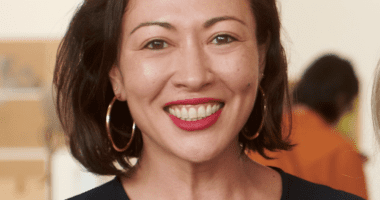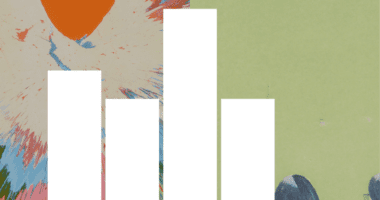The Artsy Asks Series
Experts answer the most important questions for galleries today.
Who
Casey Lesser joined Artsy in the fall of 2013 as an intern on the Editorial team. In the decade since, she’s written, reported, and edited thousands of articles on art, artists, galleries, creativity, and more. Now, at the helm of the Content team, she works with Artsy’s editors, writers, and curators to create the storytelling that you see across Artsy Editorial, our social media channels, and curated collections.

Casey Lesser, Artsy’s Director of Content
Casey Lesser joined Artsy in the fall of 2013 as an intern on the Editorial team. In the decade since, she’s written, reported, and edited thousands of articles on art, artists, galleries, creativity, and more. Now, at the helm of the Content team, she works with Artsy’s editors, writers, and curators to create the storytelling that you see across Artsy Editorial, our social media channels, and curated collections.
This month, we sat down with Casey to learn about the behind-the-scenes of Artsy Editorial—including how the team chooses its stories and The Artsy Vanguard—and what’s on the horizon for the Content team in 2024.
How has Artsy Editorial changed over the past decade?
It’s no secret that Artsy Editorial’s coverage has changed a lot over the past 10 years—but what publication hasn’t? In the early days, we were writing small snippets of text to accompany artworks on Artsy; soon after, we introduced longform essays, fun listicles, fair reporting, and in-depth artist studio visits. In the years that followed, we built out four verticals of coverage, seeking to reach a broader audience through stories around art history, visual culture, and creativity, in addition to art and the market. Over the past four years, we’ve sharpened our focus to speak more directly to art collectors and art industry folks and to offer context around the artworks, artists, galleries, fairs, and auctions that you see on Artsy.
What is the Editorial team focused on today? What are you most excited about now?
These days, our Editorial coverage is split into two halves: our art stories—artist profiles, museum show reviews, lists, and trend pieces—help our readers discover new artists and stay on top of today’s most relevant artists; and our art market coverage offers fresh insights via auction and fair reports, market analysis, profiles of gallerists, collectors, and other industry players, and data storytelling.
Earlier this fall, we re-launched our News vertical, where we cover developments from galleries, artists, auctions, fairs, and more. With News, we’re able to be more nimble and reactive. It felt like the missing piece in seeking to keep our readers on the pulse of the art world.
I’m always excited about our coverage of emerging artists. It’s important to us to use our platform to amplify the voices and works of exceptional artists who are not yet well known, or maybe only known on a regional scale. We do standalone profiles of artists of course, but we also have our monthly Artists on Our Radar series and The Artsy Vanguard, the 2023 edition of which launched earlier this month.
On the market side, our data storytelling is particularly compelling. Over the past year especially, we’ve been digging into Artsy data, auction data, and surveys with our users and gallery network to glean insights about the market and the industry. We’ve been able to identify the artists gaining momentum—this is a highlight of our monthly newsletter Artsy Insider—as well as assess the state of the auction market, and check in with collectors on their buying preferences.
We also just relaunched our industry-focused newsletter The Gallerist, through which we’ll be sharing original reporting and data insights that are tailored to professionals working in the gallery industry. (You can sign up here.)

Shota Nakamura, SUMMER TABLE, 2023. Courtesy of C L E A R I N G.
Artsy Vanguard
What do you and the editors look for when you’re reviewing pitches from writers and galleries?
We get this question a lot! The team and I are always thinking about our audience: Will Artsy users be interested in this artist? Will collectors consider this story a “must-read”? Based on the performance of past stories, we have a good sense of what resonates with our audience.
That said, what ultimately leads us to accept or reject a pitch—be it from a gallery, a PR firm, one of our writers, or one of us on the in-house team—is the angle. We look for original, timely, interesting narratives that are easy to follow; resonate with collectors and the art world today; relate to a current show, event, or popular culture; and involve an interview or some other form of original reporting. Finally—and critically—the story must have strong, high-quality images, and must easily translate into a snappy headline. We ask freelance writers to submit pitches with proposed headlines from the outset.
How do you plan out the editorial calendar and choose the artists, galleries, and other subjects of your stories?
We usually plan two to three months in advance and start by plotting out major moments like big art fairs and auctions, highly anticipated openings, institutional shows and biennials, heritage months, and Artsy initiatives, like Vanguard or our online fair Foundations (the next edition of which is launching in January 2024).
From there, we slot in our recurring series, profiles, reviews, and market reports. And to fill in the rest of the holes, we review pitches from freelancer writers and press contacts, but we also look at what’s happening on Artsy. We review the works that our partner galleries are uploading to Artsy, with an eye towards new artists and trends, or galleries with fresh programs.
When it comes to artist profiles or the artists we’re incorporating into larger stories, we’re mostly choosing living, contemporary artists who are making original work, showing with our partner galleries, and having big career moments, like a new show or a fair presentation. We prefer when a story has a peg or a calendar hook—a reason why we’re talking about this artist at a given moment.
We tend to lean towards emerging artists whom we can be the first to profile; older or late artists gaining overdue acclaim; or big-name artists who will give us an interview and share original insights. For our market stories, we’re most interested in those artists gaining notable traction at auctions and fairs. Regardless of an artist’s career stage, we’re interested in the strength of the artist’s work, of course, but we also make sure that there’s a clear and intriguing story to tell.
Our profiles of gallerists and collectors run the gamut. We like to hear from young or rising collectors about their motivations and approaches to collecting or selling art, but we also value the established voices who offer a sense of aspiration, and often, sage advice for the next generations. It’s also exciting to hear from collectors who have a unique focus or mission behind their collections.
When it comes to gallerists, we like to get to know Artsy’s partner galleries—there are more than 3,500, so we’re spoiled for choice—and speak with the founders and directors about their distinctive programs, the challenges of running a gallery, and the market topics that are most relevant to galleries today.
You mentioned The Artsy Vanguard before. How do you choose the artists each year? How can a gallery nominate one of its artists for next year’s feature?
This year marks our sixth edition of The Artsy Vanguard and we’ve taken a new approach each year. For 2023, we started with an open call for nominations, which resulted in a list of over 2,300 artists to consider. From there, our editors, curators, and other in-house experts looked for artists making strong work, starting to show with tastemaking galleries, and gaining momentum with institutions and collectors. When we put the list of artists together, we also seek to have a balanced spread in terms of the artist’s backgrounds, where they’re based, and their practices. This year, unintentionally, we didn’t have any artists based in New York, which was surprising but also refreshing!
Next year, we’re trying a new tack: building our list based on artists we’re discovering on Artsy and beyond throughout the year. We’ll still have the same criteria, but the list will ultimately be drawn from the other types of content we do, like our Artists on Our Radar articles, the Curator’s Picks: Emerging collection (which I curate), and other projects from our Editorial and Curatorial teams. The best thing a gallery can do to nominate an artist is to add their work to Artsy and let us know—either through your account executive or by sending us a note via [email protected], with the subject line “Artsy Vanguard 2024 nomination.”
What can we expect from the Content team in the months ahead?
December kicks off with the Miami fairs, and you can expect our usual Editorial and social media coverage—we’ll be sharing Instagram Reels throughout the week featuring our highlights—plus, we plan to come back and tell you about the artists we discovered on the ground. Then, the following week, we’ll start rolling out our end-of-year content. This will include features on 2023’s most influential artists, key market insights—which will be discussed in a forthcoming webinar—and breakout galleries, which will be released in the December edition of The Gallerist.
In 2024, we’ll start with some trend forecasting and artists to watch according to collectors and curators, then later in the month, we launch the second edition of Foundations, an Artsy-led online art fair focused on galleries that are known for supporting emerging artists. Other highlights of early 2024 include coverage of Frieze Los Angeles and the art scene there in February, and a new market report timed to Women’s History Month in March. I’m most eager for April, when we’ll set our sights on the ever-dazzling Venice Biennale. We’ll cover the best of the international exhibition and the national pavilions, as well as the trove of shows spread across the city. I can’t wait!
Is there any advice you’d give to galleries that are creating content of their own?
For the most part, we’ve moved away from this, but there’s nothing more frustrating than when you walk into a show or go onto a gallery’s website and the press release is a poem or a few lines of text that feels incredibly cryptic. A press release is a fantastic opportunity to engage a new audience and it’s a shame to alienate them instead.
Beyond that, I’d say to lean into the studio visit. While few people get to meet your artists and enter their workspaces, recreating that experience through content is the next best thing—and that doesn’t mean hiring a video crew. It could be commissioning photography or working with the artist to create videos for Instagram. Your content doesn’t have to be perfect—especially on social media, where it almost feels better, more magnetic, when it’s raw. Few things can make us fall in love with an artist’s work more than seeing the space where it’s made while also hearing the artist talk about it. It’s kind of magical to capture that and share it with an infinite audience.



